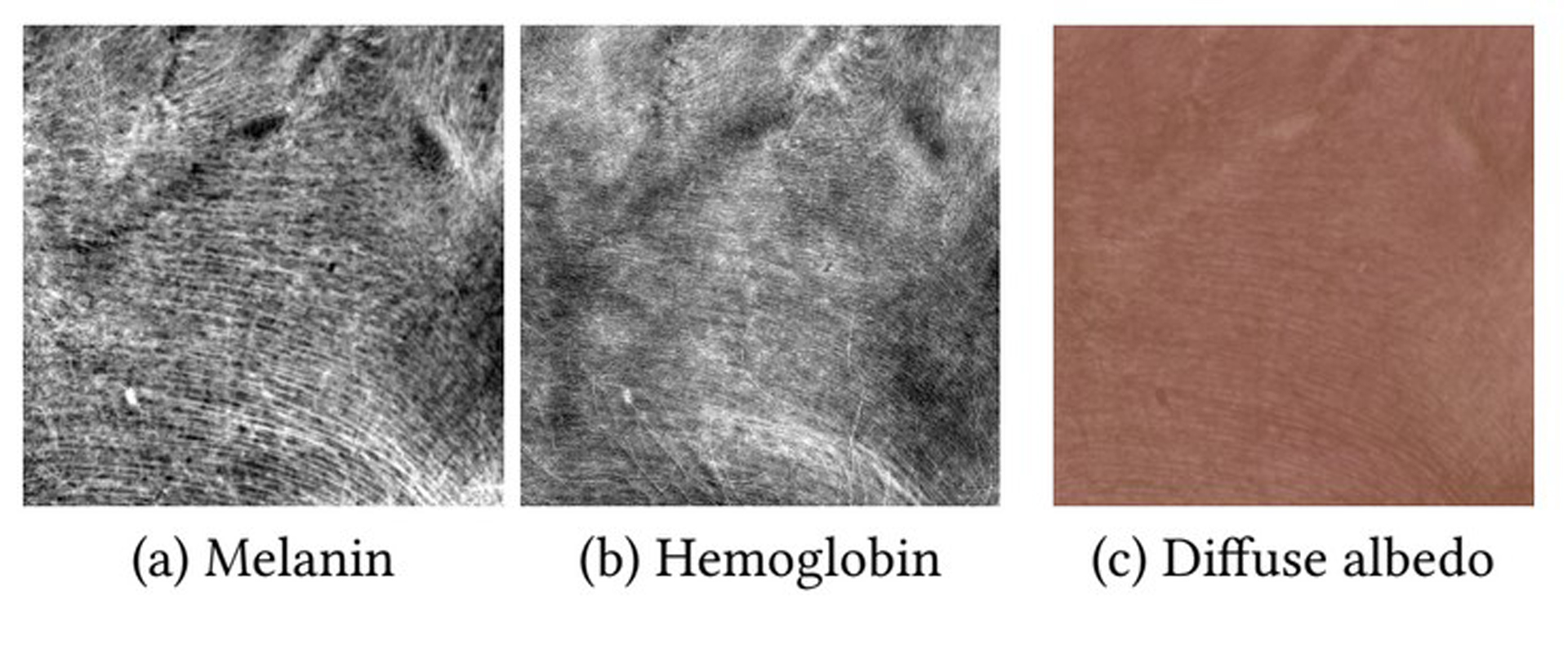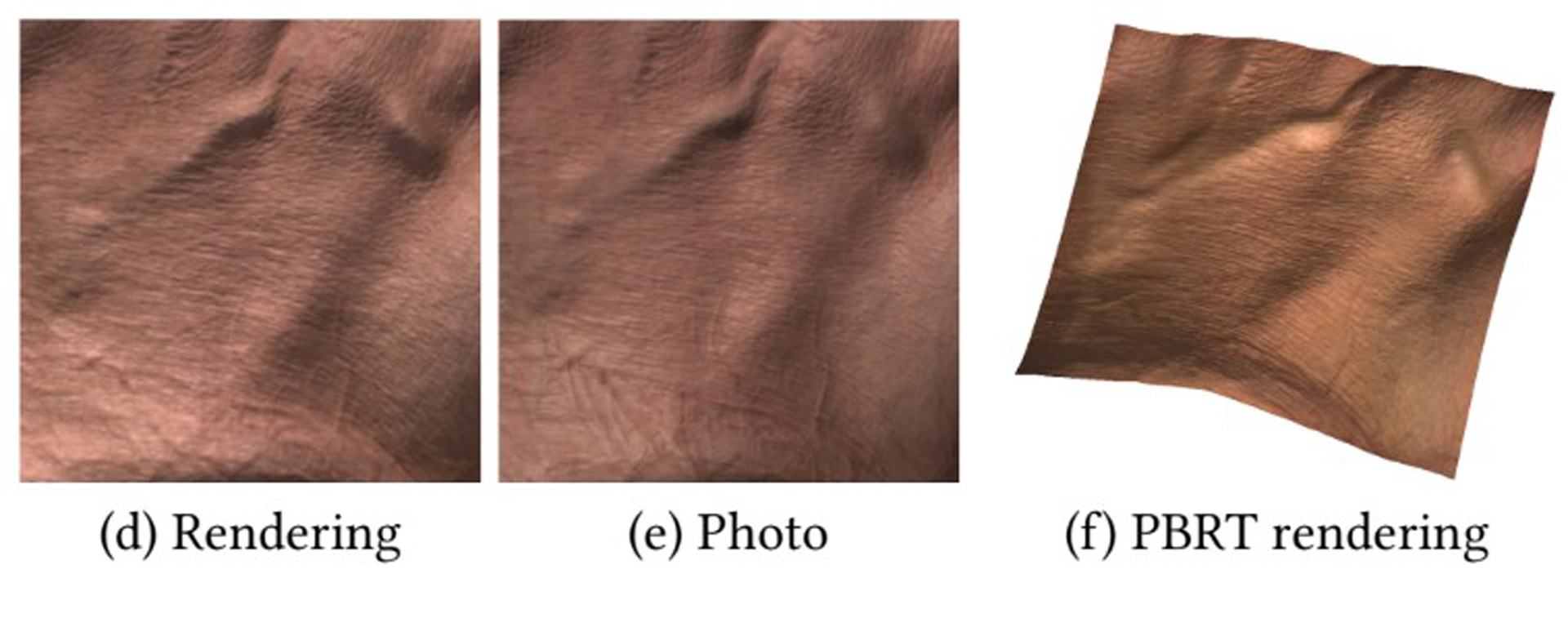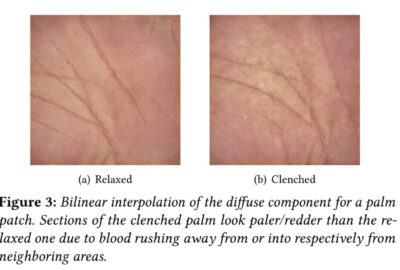“Practical Measurement-Based Spectral Rendering of Human Skin” by Gitlina, Dhillon, Hansen, Pai and Ghosh
Conference:
Type(s):
Title:
- Practical Measurement-Based Spectral Rendering of Human Skin
Presenter(s)/Author(s):
Entry Number: 40
Abstract:
INTRODUCTION
Realistic appearance modeling of human skin is an important research topic with a variety of application in computer graphics. Various diffusion based BSSRDF models [Jensen et al. 2001, Donner and Jensen 2005, Donner and Jensen 2006] have been introduced in graphics to efficiently simulate subsurface scattering in skin including modeling its layered structure. These models however assume homogeneous subsurface scattering parameters and produce spatial color variation using an albedo map. In this work, we build upon the spectral scattering model of [Donner and Jensen 2006] and target a practical measurement-based rendering approach for such a spectral BSSRDF. The model assumes scattering in the two primary layers of skin (epidermis and dermis respectively) can be modeled with relative melanin and hemoglobin chromophore concentrations respectively. To drive this model for realistic rendering, we employ measurements of skin patches using an off-the-shelf Miravex Antera 3D camera which provides spatially varying maps of these chromophore concentrations as well as corresponding 3D surface geometry (see Figure 1) using a custom imaging setup.
We employ this data to implement a practical approximation of spatially varying subsurface scattering in PBRT using the [Donner and Jensen 2006] model. True heterogeneous subsurface scattering in skin has previously been proposed by [Donner et al. 2008] who employed a more complex spectral scattering model involving an additional absorption layer and additional chromophore parameters. Instead, we chose the simpler two layer model of [Donner and Jensen 2006] in this work because of ease of mapping available measurements of chromophore concentrations to model parameters, and achieve pseudo spatial variation in the final rendered result through spatially varying linear combinations of a few basis homogeneous subsurface scattering renderings.
References:
- Jensen, H. W., Marschner, S. R., Levoy, M., and Hanrahan, P. 2001. A practical model for subsurface light transport. In Proceedings of ACM SIGGRAPH 2001, 511-518.
- Donner, C., and Jensen, H. W. 2005. Light diffusion in multi-layered translucent materials. ACM Trans. Graphic. 24, 3, 1032-1039.
- Paul Kubelka, “New Contributions to the Optics of Intensely Light-Scattering Materials. Part II: Nonhomogeneous Layers*,” J. Opt. Soc. Am. 44, 330-335 (1954).
- Donner, C., and Jensen, H. W. 2006. A spectral BSSRDF for shading human skin. In Rendering Techniques, 409-417.
- Donner, C., Weyrich, T., Deon, E., Ramamoorthi, R., and Rusinkiewicz, S. 2008. A Layered, Heterogeneous Reflectance Model for Acquiring and Rendering Human Skin. In Trans. on Graphics (Proc. SIGGRAPH Asia), Vol. 27, 10:1 10:12.
Keyword(s):
Additional Images:
- 2018 Posters: Gitlina_Practical Measurement-Based Spectral Rendering of Human Skin
Acknowledgements:
This work was funded by an EPSRC Early Career Fellowship (Grant No. EP/N006259/1 for A. Ghosh) and in part by NSERC Idea-to-Innovation grant, ICICS, Canada Foundation for Innovation, NSERC Discovery grants, and the Canada Research Chairs Program.








